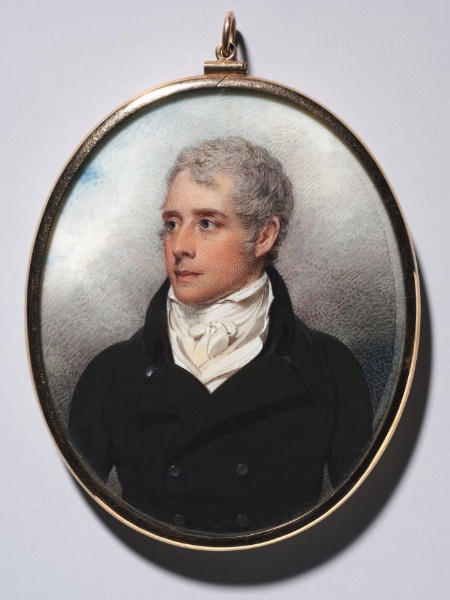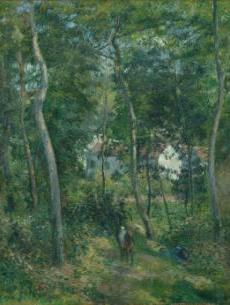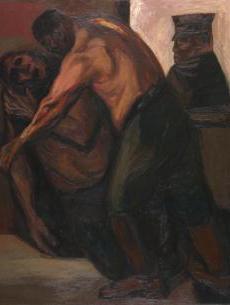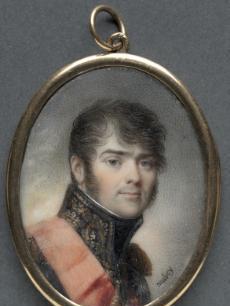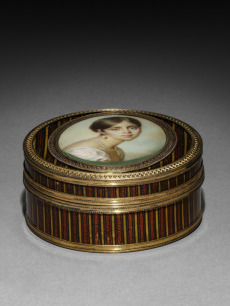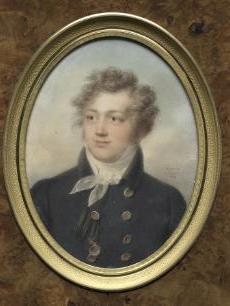Did You Know?
Sandford Peacocke was married in 1801 and by 1802 was serving in the British military in Jamaica. It may have been for these occasions that the miniature was painted.Description
William Wood worked primarily in London and exhibited over one hundred miniatures at the Royal Academy, where he began his training at the age of sixteen. His portraits of men in particular are regarded as highly refined and remarkably sensitive psychological studies. While Wood is known to have copied miniatures by Richard Cosway (1742–1821), George Engleheart (1752–1829), and John Smart (1741–1811), his distinctive style can be observed in the network of small dots and dashes of paint that follow the contours of a sitter’s face. In addition to portrait miniatures, Wood executed a number of eye miniatures and became increasingly interested in watercolor landscapes during the years preceding his death in 1810. He signed his miniatures on the paper backing, often with the sitter’s name or initials, Wood’s studio location, and the year. The fact that the artist signed his work on the back rather than the front has contributed to making his miniatures harder to identify immediately, an issue complicated by his aptitude for imitating a variety of styles employed by his fellow miniaturists.
Historians have rare insight into Wood’s working process due to the survival of his four-volume ledger that documents 1,211 miniatures painted by the artist between 1790 and 1808; the ledger is now in the collection of the National Art Library at the Victoria and Albert Museum. The entries are remarkably thorough, frequently including information about when a work was begun and completed, its size, the colors used and their durability, the sitter’s costume, and the price charged. From 1794 Wood also attached to the ledger entries tracings of many of the miniatures. Along with the careful notes he kept, these tracings would have facilitated the making of copies or revisions, which were evidently performed with some frequency when a sitter desired a change in hairstyle or costume; the promotion of an officer necessitated an alteration of his uniform; or a miniature’s pigments proved fugitive. Wood usually used numbers to refer to the colors applied in a work, but no key for them exists, and their identity often remains a mystery.
The entry for this portrait is characteristically complete and notes that the sitter was residing at Devonshire Street in London. It contains an attached tracing of the miniature and records that the portrait was begun on March 25, 1801, finished on April 11, and delivered July 29. Wood’s miniatures were often delivered days after they were completed, so it is noteworthy that this work was not relinquished by Wood for more than three months after its completion. Moreover, it was received not by the sitter or a family member but by a “General Stuart,” whose relationship to Peacocke is unknown.